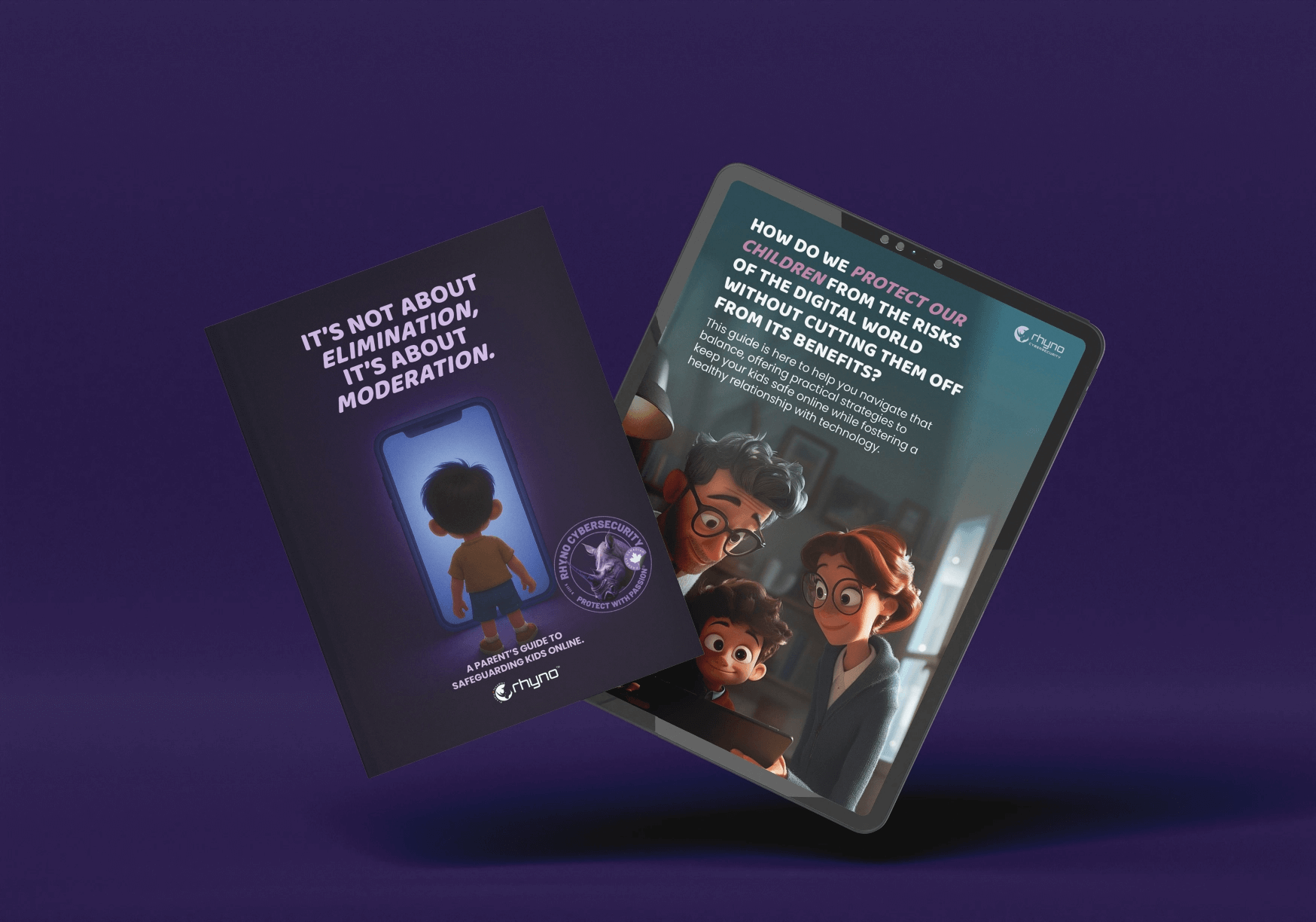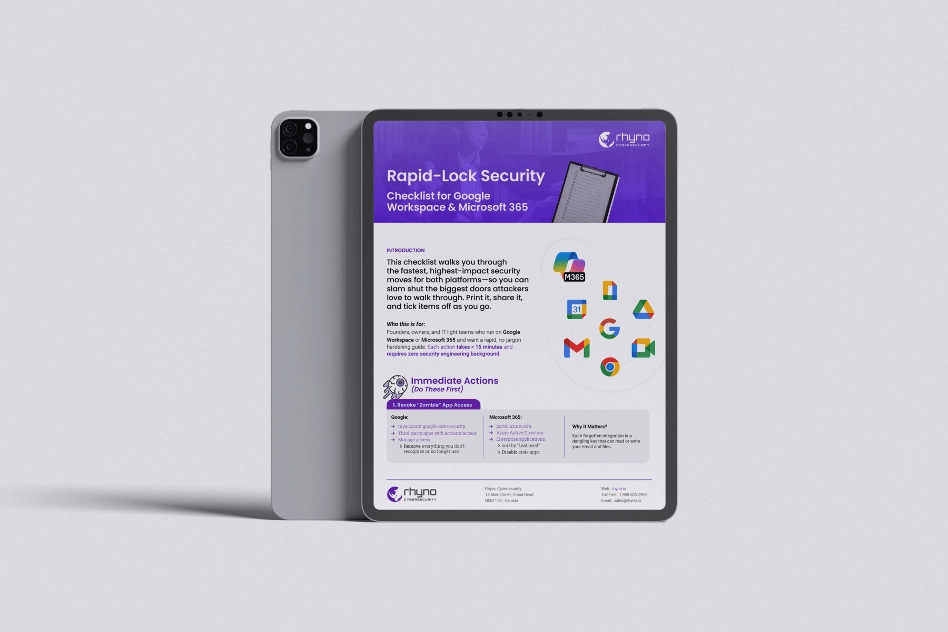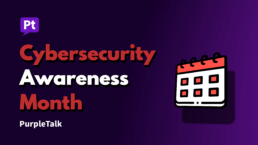Cybersecurity Awareness Month – Is Your Team Ready for 2026?
As the pages of the calendar turn and we wrap up 2025, this year’s Cybersecurity Awareness Month feels different. It’s less of a retrospective and more of a final briefing before heading into a new, more unpredictable battlefield. The primary challenge for 2026 isn’t just about reinforcing old lessons; it’s about preparing for an entirely new class of adversary, one that’s intelligent, adaptive, and powered by artificial intelligence. The threats you nailed—AI-powered phishing and deepfakes—aren’t science fiction anymore. They are here, and they are fundamentally changing the game.
The New Face of Deception: AI-Powered Attacks
For years, the golden rule of spotting a phishing email was to look for the flaws: the awkward grammar, the generic greeting, the slightly “off” logo. Forget all of that. AI has turned phishing from a clumsy dragnet into a precision-guided weapon.
Imagine an attacker deploying an AI that scrapes your company’s website, recent press releases, and even the public LinkedIn profiles of your key employees. In minutes, it can craft a flawless email that:
- Mimics Writing Styles: The AI can learn the exact tone, phrasing, and even the sign-off style of your CEO or head of finance.
- Uses Hyper-Personalized Context: The email might reference a specific project your team just completed or a conference a manager recently attended, making the fraudulent request seem perfectly legitimate.
- Operates at Unprecedented Scale: This isn’t one person crafting one email. It’s a machine launching thousands of unique, highly convincing attacks simultaneously.
The Triple Threat: AI, Deepfakes, and the Vanishing Office Perimeter
The cybersecurity challenges of 2026 and beyond aren’t just an evolution; they are a revolution in criminal tactics. To truly grasp the danger, we need to look closer at the three forces that are working in concert to undermine traditional business defenses: hyper-intelligent phishing, deeply convincing fakes, and the new vulnerabilities of a work-from-anywhere world.
AI-Powered Phishing: The End of “Obvious” Scams
For years, we trained employees to spot the classic signs of a phishing attempt: the generic “Dear Sir/Madam” greeting, the glaring spelling mistakes, the slightly-off email address. Artificial intelligence has rendered that advice obsolete. AI-powered phishing is a whole different beast. It works by scraping immense amounts of public data—your company’s latest news, an executive’s posts on LinkedIn, even details about specific projects—to build a perfect, personalized trap.
The result is an email that doesn’t just look legitimate; it feels legitimate. It might reference a recent conversation, use the exact tone and sign-off of a trusted colleague, and contain no grammatical errors. Imagine an email to your finance department that says, “Hi John, following up on our chat about the ‘Project Titan’ vendor payment, can you please process the attached invoice ASAP? I’ve CC’d Jane from legal to confirm.” The context is correct, the language is natural, and the urgency is plausible. This isn’t a generic scam; it’s a bespoke, AI-crafted social engineering masterpiece designed to bypass human intuition.
Deepfake Technology: When You Can’t Trust Your Own Ears
If AI phishing preys on what we read, deepfake technology preys on what we see and hear. This is the stuff of corporate nightmares. Using AI, a criminal can take just a few seconds of publicly available audio of your CEO—from a podcast, an earnings call, or a news interview—and clone their voice. They can then use this voice clone to leave a frantic voicemail or even engage in a real-time phone call.
Consider the scenario: It’s 4:45 PM on a Friday. A finance clerk receives a call that appears to be from the CEO’s number. The voice on the other end is a perfect match. It’s stressed, urgent, and says, “I’m about to step into a meeting and my laptop just died. We have to make a payment for a confidential acquisition right now or the deal will collapse. I’m sending you the wire details. Please process it immediately and don’t speak to anyone about this until I give the all-clear on Monday.” The pressure, the authority, and the sheer believability of the voice can override even the most stringent protocols. Video deepfakes are the next terrifying frontier, turning what was once irrefutable proof into a potential weapon against you.

Hybrid Workforce Vulnerabilities: A Perimeter with a Thousand Holes
The shift to remote and hybrid work has been a catalyst for innovation, but it has also completely shattered the traditional “castle-and-moat” model of cybersecurity. Your security perimeter is no longer the four walls of your office; it’s every employee’s home network, every coffee shop Wi-Fi, and every personal device used to check work email. This creates a dizzying array of vulnerabilities:
- Unsecured Networks: Home Wi-Fi routers often use default passwords and lack the robust security configurations of a corporate network, making them low-hanging fruit for attackers.
- BYOD (Bring Your Own Device) Risks: When employees use personal laptops and phones, these devices may lack company-mandated security software, be infected with malware, or be shared with other family members, creating a bridge into your corporate environment.
- Psychological Isolation: Remote employees can feel disconnected, making them more susceptible to phishing emails that appear to come from management. An urgent request from a “boss” can feel more compelling when you can’t just walk over to their desk to verify it.
This distributed environment acts as a threat multiplier. A remote worker on an insecure network is the perfect target for a hyper-personalized AI phishing attack, making the hybrid workforce the new frontline in cybersecurity.
This is the new reality. Traditional Cybersecurity Awareness Training that relies on outdated “spot the fake” checklists is leaving your team dangerously unprepared.
Then there’s the even more chilling evolution: deepfakes. We’re not just talking about emails anymore. We’re talking about weaponized audio and video. Think about this scenario: your accounts payable clerk gets a frantic voicemail that sounds exactly like your company’s president, urgently instructing them to pay a new vendor to close a critical deal before the end of the day. The voice has the right cadence, the right inflections—it’s flawless. How can you expect your employee to defy a direct order from what appears to be their boss? This is “Vishing” (voice phishing) 2.0, and it’s designed to short-circuit human logic by exploiting trust and urgency.
Fighting Smart Threats with Smarter Training
So, how do you defend against a threat that can perfectly imitate you and your colleagues? You can’t just throw another PowerPoint presentation at the problem. To combat AI, you need to build a more sophisticated, resilient human firewall. This means your Cybersecurity Awareness Training for 2026 must evolve.
This is precisely the challenge that a modern security partner like Rhyno.io is built to address. They recognize that fighting tomorrow’s threats requires more than just awareness; it requires conditioning. Their platform moves beyond theory and into practice by:
- Simulating Modern Threats: Rhyno.io’s simulated attacks aren’t based on last year’s phishy emails. They can be customized to mimic the sophisticated, context-rich threats your team will actually face, training them to develop a healthy sense of skepticism and critical thinking.
- Providing Actionable Data: How do you know if your team is prepared? Rhyno.io’s enterprise-strength reporting provides a clear “Cybersecurity Risk Score,” showing you exactly where your vulnerabilities lie and tracking your team’s improvement over time. You can’t manage what you can’t measure.
- Fostering a Continuous Culture: AI-driven threats don’t take a break, and neither should your defenses. The future of security is a continuous cycle of education, simulation, and reinforcement, creating a culture where security is second nature.
As we head into 2026, the question is no longer if your organization will be targeted by an AI-powered attack, but when. Your best defense is a workforce that is not only aware but also prepared, practiced, and empowered to identify deception, even when it looks and sounds impossibly real.
Don’t wait for a sophisticated AI attack to become your wake-up call. Visit Rhyno.io today and discover how our next-generation Cybersecurity Awareness Training can prepare your team for the real threats of 2026.


